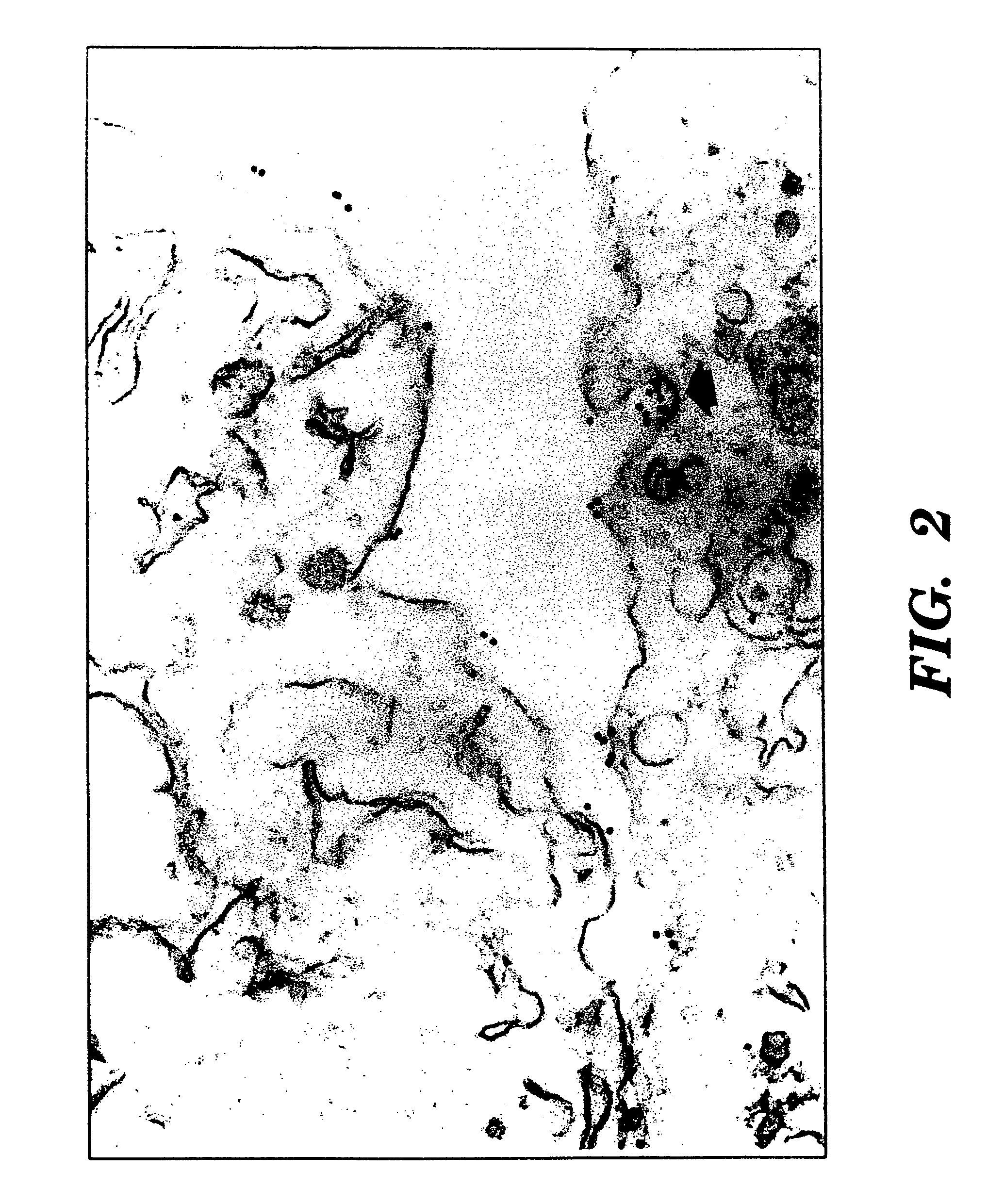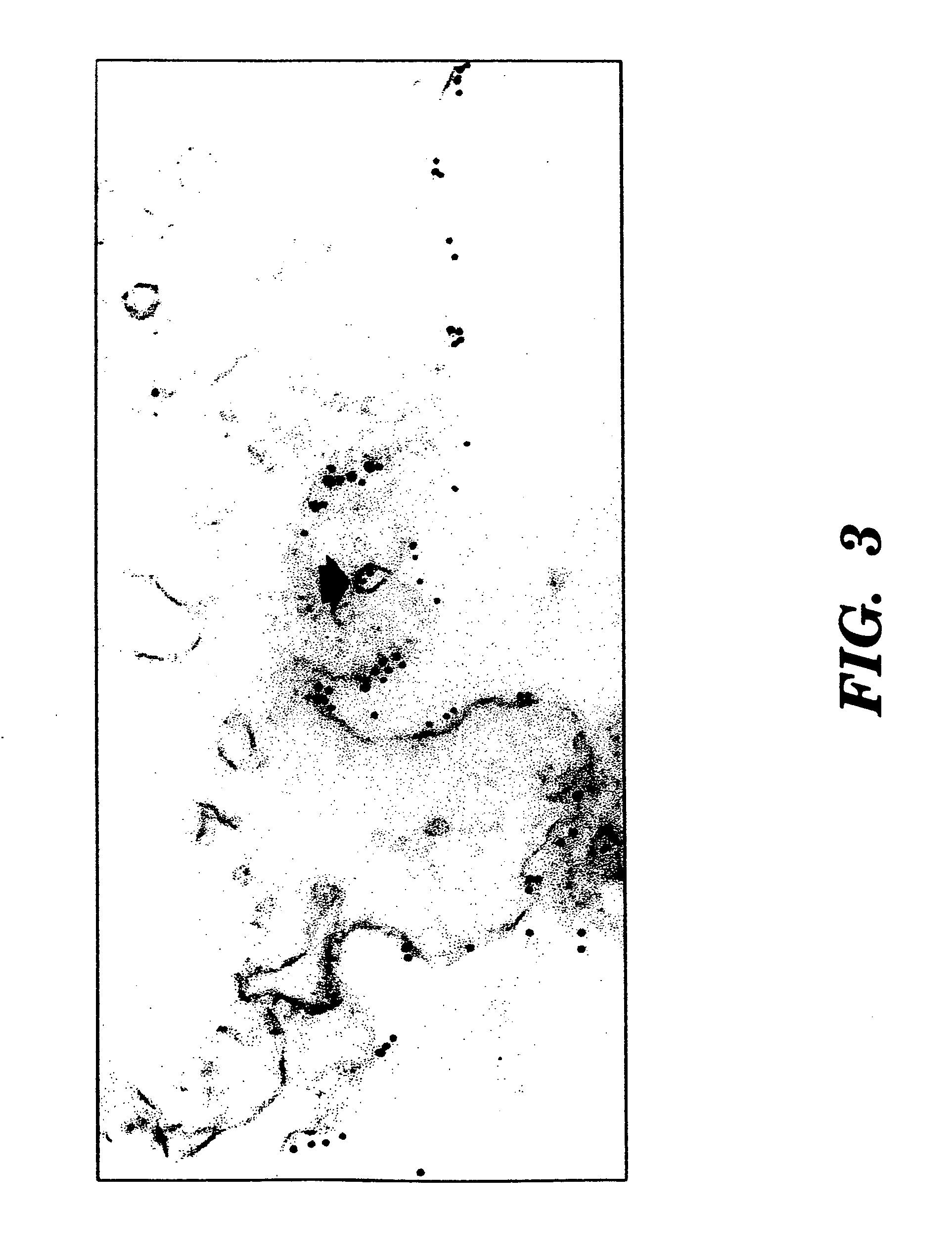Treatment and diagnosis of prostate cancer
a prostate cancer and diagnosis technology, applied in the field of prostate cancer treatment and diagnosis, can solve the problems of inability to distinguish metastatic prostate cancer involvement of lymph nodes by a criterion other than size, and difficult clinical evaluation of nodal involvement, and achieve the effect of improving treatment and diagnosis
- Summary
- Abstract
- Description
- Claims
- Application Information
AI Technical Summary
Benefits of technology
Problems solved by technology
Method used
Image
Examples
example 1
Human Tissues
[0087]Fresh specimens of benign and malignant tissues were obtained from the Department of Pathology of New York Hospital Cornell University Medical Center (“NYH-CUMC”),
example 2
[0088]Cultured cell lines of human cancers were obtained from the Laboratory of Urological Oncology of NYH-CUMC. The prostate cancer cell lines PC-3 (Mickey, D. D., et al., “Characterization Of A Human Prostate Adenocarcinoma Cell Line (DU145) As A Monolayer Culture And As A Solid Tumor In Athymic Mice,”Prog. Clin. Biol. Res., 37:67-84 (1980), which is hereby incorporated by reference), DU-145 (Mickey, D. D., et al., “Characterization Of A Human Prostate Adenocarcinoma Cell Line (DU145) As A Monolayer Culture And As A Solid Tumor In Athymic Mice,”Prog. Clin. Biol. Res., 37:67-84 (1980), which is hereby incorporated by reference), and LNCaP (Horoszewicz, J. S., et al., “LNCaP Model Of Human Prostatic Carcinoma,”Cancer Res., 43: 1809-1818 (1983), which is hereby incorporated by reference) were obtained from the American Type Culture Collection (Rockville, Md.). Hybridomas were initially cloned in RPMI-1640 medium supplemented with 10% FCS, 0.1 mM nonessential amino acids...
example 3
Preparation of Mouse Monoclonal Antibodies
[0089]Female BALB / c mice were immunized intraperitoneally with LNCaP (6×106 cells) three times at 2 week intervals. A final intraperitoneal booster immunization was administered with fresh prostate epithelial cells which had been grown in vitro. Three days later, spleen cells were fused with SP-2 mouse myeloma cells utilizing standard techniques (Ueda, R., et al., “Cell Surface Antigens Of Human Renal Cancer Defined By Mouse Monoclonal Antibodies: Identification Of Tissue-Specific Kidney Glycoproteins,”Proc. Natl. Acad. Sci. USA, 78:5122-5126 (1981), which is hereby incorporated by reference). Supernatants of the resulting clones were screened by rosette and complement cytotoxicity assays against viable LNCaP. Clones which were positive by these assays were screened by immunochemistry vs normal kidney, colon, and prostate. Clones which were LNCap+ / NmlKid− / colon− / prostate+ were selected and subcloned 3 times by limiting dilution. The immunogl...
PUM
| Property | Measurement | Unit |
|---|---|---|
| size | aaaaa | aaaaa |
| wavelengths | aaaaa | aaaaa |
| wavelengths | aaaaa | aaaaa |
Abstract
Description
Claims
Application Information
 Login to View More
Login to View More - R&D
- Intellectual Property
- Life Sciences
- Materials
- Tech Scout
- Unparalleled Data Quality
- Higher Quality Content
- 60% Fewer Hallucinations
Browse by: Latest US Patents, China's latest patents, Technical Efficacy Thesaurus, Application Domain, Technology Topic, Popular Technical Reports.
© 2025 PatSnap. All rights reserved.Legal|Privacy policy|Modern Slavery Act Transparency Statement|Sitemap|About US| Contact US: help@patsnap.com



